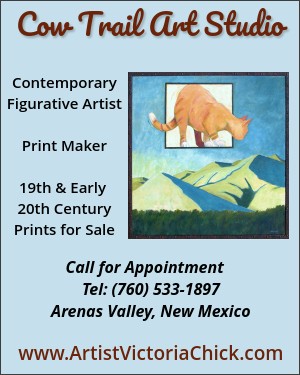WORKING HORSES OF AMERICA
By Victoria Chick, contemporary figurative artist and early 19th & 20th Century Print Collector
 Contemporary figurative artist Victoria Chick discusses the history and art of working horses in America on Big Blend Radio.
Contemporary figurative artist Victoria Chick discusses the history and art of working horses in America on Big Blend Radio.
I was once one of those little girls that love horses. As I grew, my attraction to them never went away. I drew them, read about them and became aware of them as a subject in painting, drawings, and prints throughout history.
The first horses I saw in art were etchings by R.H. Palenski, an artist acquaintance of my father. He very kindly encouraged me, as 3 year old, when I showed him crayon horses on cardboard. Palenski specialized in etchings of famous Thoroughbred race horses. Later, art history classes exposed me to English hunting prints, and the beautiful horse portraits by Stubbs, colorful racehorses done by French Impressionist Edouard Manet, prize pasture horses by 17th century Dutch painters, and the wonderful Horse Fair painting by Rosa Bonheur. These artists depicted elegant horses being used for pleasure or simply as beautiful.
After I began collecting original prints, I became aware of equine art of a different type. These were woodcuts, etchings and lithographs depicting horses at work. Horses provided power and transportation all over the world, from Colonial times into the 20th century in the United States. Their last extensive use was around the time of the Great Depression. Looking at these prints is seeing life in early America.
Draft horses were used for military purposes during the Revolutionary War to pull supply wagons and cannons. In the Civil War, they did all this plus pulled ambulances, and in both wars saddle horses were ridden by commanding generals. Horses saw use even more extensively in the Indian wars of the western United States, Spanish-American War and the Mexican War. Widespread breeding of good saddle horses increased the supply of good mounts that increased the mobility of fighting units. Those units were referred to as Dragoons during the Revolutionary War and into the Civil War. A variety of horse breeds and cross breeds were used including Morgans and American Saddlebreds. George Washington rode a white horse with Arabian blood. Arabians contributed to the three Thoroughbred racing bloodlines. The important thing for military use was all horses had to be the same height so their strides would be closely similar since they needed to move as a unit. The U.S. Cavalry was formed after the Civil War and was used extensively to open what became the Western United States protecting settlers from Indian raids. The Cavalry was part of the Military until just before WWII, when mechanized transportation replaced it.
In addition to military use, horses pulled family buggies and agricultural equipment. Until the early 20th century, every business, from doctors to construction workers, needed horses or mules to function. In cities, strong, quiet horses were hitched to special wagons that carried men, water, and hoses to fight fires. Food was delivered from farm to grocery stores or sold from horse-drawn wagons in city markets. “Rag Men” or scrap metal dealers drove horse carts through residential neighborhoods calling out for donations in an early form of recycling. Cowboys cared for cattle using horses and drove them, often times, hundreds of miles to market or railheads. Beside the rural mounted sheriffs and organizations like the Texas Rangers, cities used mounted police that were especially effective at crowd control.
Horses that were used for utilitarian purposes often had heavier muscles than lighter breed pleasure or sporting horses. A good utility horse had strong bones, powerful muscles, and a calm disposition. Sometimes the horses’ gaits were important to certain tasks. The ability of a horse to move in long, smooth strides was beneficial in providing a gentle ride for passengers in a buggy and for them to arrive more quickly at their destination. These were called trotters or pacers depending on the peculiarity of their movements. In the South, where flat ground was common and roads divided agricultural fields, Walking Horses moved in a four beat gait that was rapid and comfortable to the rider who might spend all day in the saddle.
Attitude often was as important a determinant in what the horse was suited for as its conformation. Gentleness and calmness have already been mentioned as important for horses involved in city traffic. “Cow Sense” was necessary for a ranch horse. A good cow horse could anticipate the direction of a cow or calf and turn it back into its herd. A cow horse could also go after a calf that might need medicating so the rider could lasso it, then stop and back up slightly to keep the rope taught, allowing the rider to quickly get off and tend to the animal. These utilitarian skills of horse and rider are maintained today in rodeo roping events. Decades of breeding for strength and attitude and quickness have resulted in the American Quarter Horse, vastly suited to cattle work.
Before the internal combustion engine, horses were the force that made America grow and function. The term “horsepower” used to describe engines is a tribute to them.
Victoria Chick is the founder of the Cow Trail Art Studio in southwest New Mexico. She received a B.A. in Art from the University of Missouri at Kansas City and awarded an M.F.A. in Painting from Kent State University in Ohio. Visit her website at www.ArtistVictoriaChick.com















